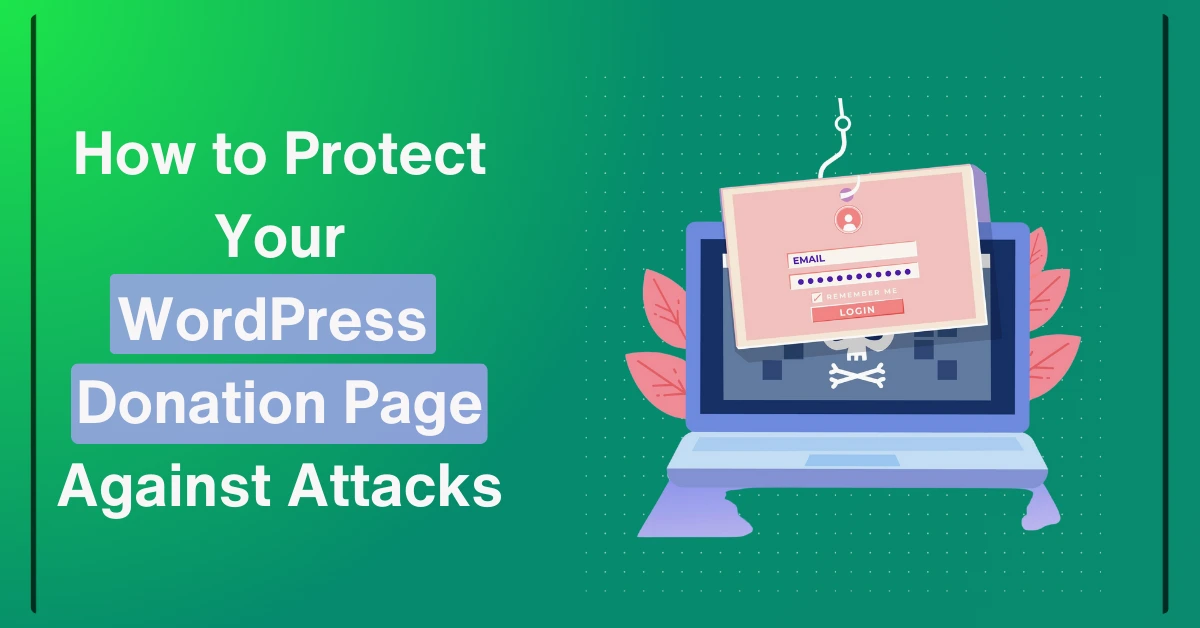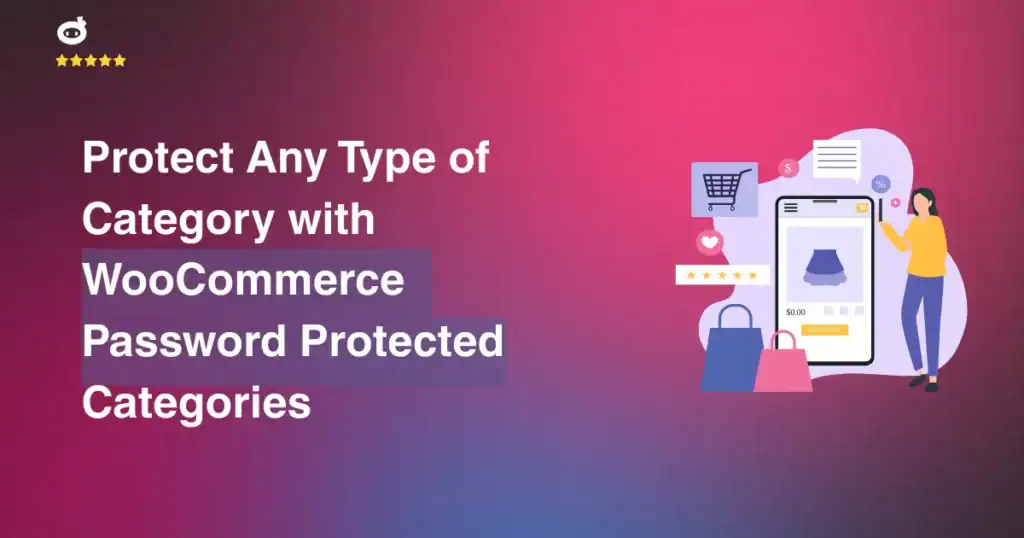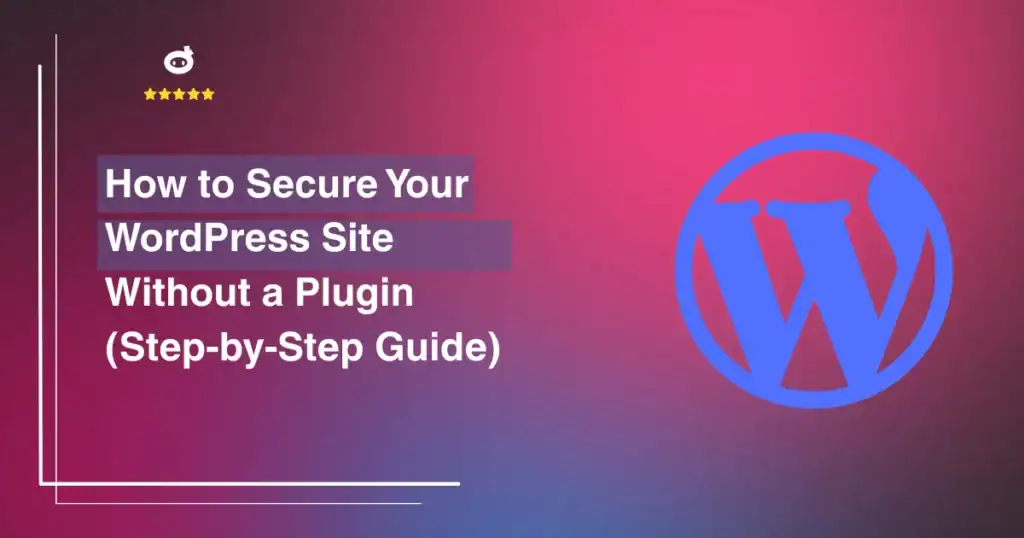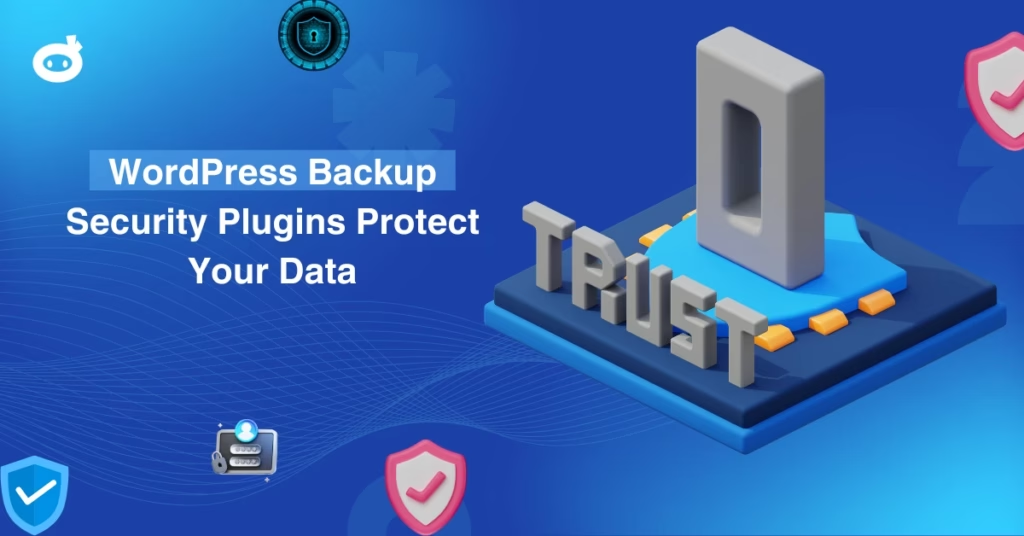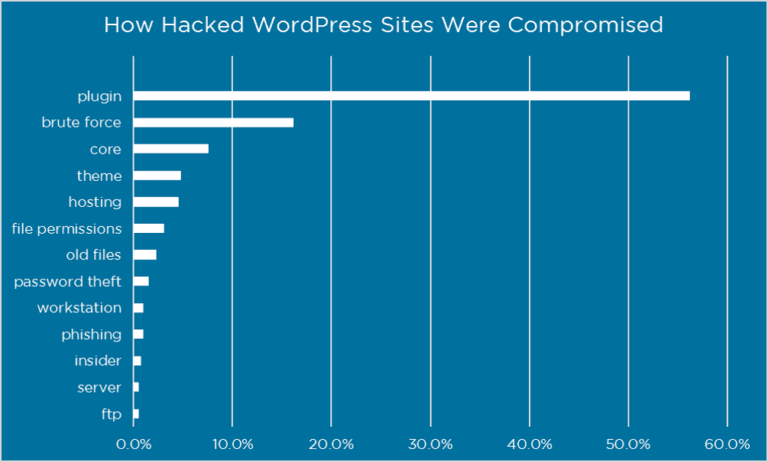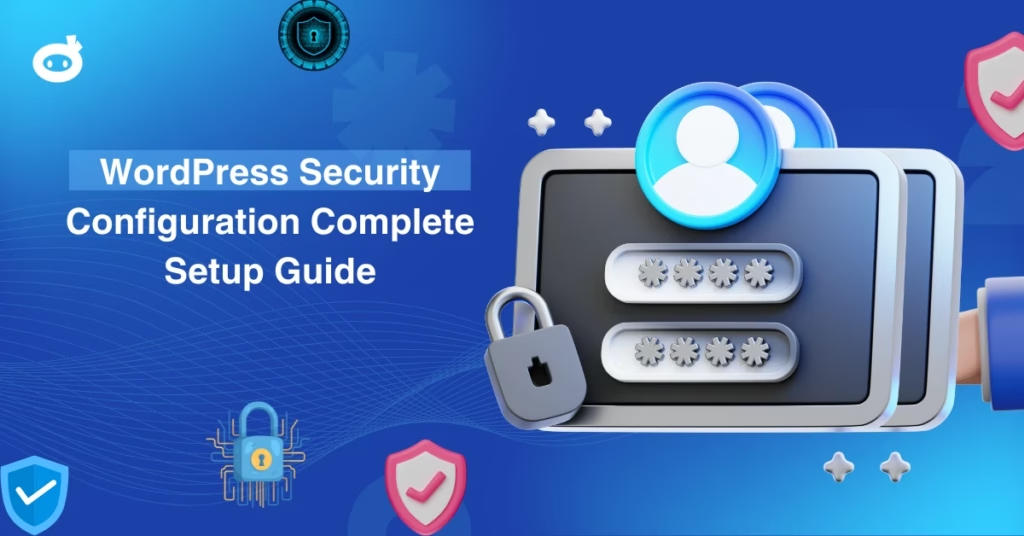Updated on
Donation pages are vital for nonprofits, charities, and crowdfunding campaigns. These pages connect organizations with donors, making it easy to contribute to meaningful causes. The convenience of online donation pages has revolutionized fundraising, but it has also made them a prime target for cyberattacks.
Hackers exploit vulnerabilities in WordPress donation pages to steal sensitive donor information, payment data, and even hijack websites for malicious activities. Cybercriminals increasingly target these pages because they handle valuable financial and personal data.
This article provides a detailed guide to Secure Your WordPress Donation Page Against Attacks. We’ll explore common vulnerabilities, indicators of attacks, and actionable steps to protect your site and maintain donor trust.
Contents
- 1 Why WordPress Donation Pages Are Vulnerable to Attacks?
- 1.1 Common Threats to WordPress Donation Pages
- 1.2 Why Donation Pages Are High-Value Targets
- 1.3 Signs Your Donation Page Might Be Under Attack
- 1.4 How to Secure Your WordPress Donation Page
- 1.5 Advanced Security Tips
- 1.6 What to Do If Your Donation Page Is Compromised
- 1.7 Real-Life Examples of WordPress Donation Page Attacks
- 1.8 How to Build Donor Trust Through Security
- 1.9 Tools to Help You Secure Your Donation Page
- 1.10 Conclusion:
Why WordPress Donation Pages Are Vulnerable to Attacks?
Common Threats to WordPress Donation Pages
WordPress powers over 43% of websites worldwide, including many donation platforms. While its popularity ensures robust support and features, it also attracts hackers looking to exploit common weaknesses. Key threats include:
1. SQL Injections
Hackers use SQL injection attacks to manipulate or steal data from your database. By exploiting poorly secured input fields, they can access sensitive information such as donor names, email addresses, and financial details.
2. Cross-Site Scripting (XSS)
XSS attacks inject malicious scripts into your website. When users interact with affected pages, these scripts can steal session cookies, redirect visitors to harmful sites, or execute unauthorized actions.
3. Brute Force Login Attempts
Hackers often deploy automated bots to guess login credentials by repeatedly trying common username-password combinations. This puts donation pages with weak or default passwords at significant risk.
4. Malware and Phishing Scams
Cybercriminals can inject malware into your site, redirecting users to fake donation pages. These phishing scams can result in donors unknowingly sharing payment details with attackers.
Why Donation Pages Are High-Value Targets
Hackers prioritize donation pages because they handle two critical types of data:
1. Sensitive Donor Information
Donation forms typically collect names, email addresses, and billing addresses. This data is a goldmine for identity theft and phishing attacks.
2. Payment Data Vulnerabilities
Many donation pages process credit card payments or integrate with payment gateways like PayPal. A poorly secured site may expose financial details, leading to fraud and legal complications.
Additionally, nonprofits often lack dedicated IT teams, making them easier targets for attackers. Cybercriminals exploit outdated plugins, weak passwords, and misconfigured security settings to compromise these sites.
Signs Your Donation Page Might Be Under Attack
Even if your site appears functional, it could still be under attack. Recognizing early warning signs is essential for mitigating damage.
Key Indicators of a Compromised Donation Page
- Unexpected Changes: Look for altered layouts, added pop-ups, or unauthorized redirects.
- Security Alerts: Notifications from plugins like Wordfence or WP Security Ninja often signal suspicious activity.
- Traffic Irregularities: A sudden drop in traffic or unusually high bounce rates could indicate phishing redirects or malware.
- Payment Issues: Complaints from donors about failed or redirected payments suggest potential compromise.
How to Check If Your Site Is Hacked
Several tools can help identify vulnerabilities or malicious activity on your site:
- Sucuri Scanner: Detects malware, blacklists, and potential security issues.
- WPScan: Audits your site for known vulnerabilities in plugins, themes, or WordPress core.
- Google Search Console: Check for security warnings or indexing issues caused by malware.
How to Secure Your WordPress Donation Page
1. Install a Trusted WordPress Security Plugin
Security plugins provide essential protection by blocking suspicious activities, scanning for malware, and monitoring login attempts. Popular options include:
- Wordfence: Comprehensive protection, including firewall and malware scanning.
- WP Security Ninja: Lightweight yet powerful, with easy-to-configure settings for beginners.
- SolidWP Security: Focuses on login security and site monitoring.
2. Use a Secure Payment Gateway
A reliable payment gateway ensures donor transactions are secure. Select gateways that comply with PCI DSS (Payment Card Industry Data Security Standard), such as:
- Stripe: Offers advanced fraud detection and end-to-end encryption.
- PayPal: Trusted by millions for secure transactions.
- GiveWP: A WordPress-specific plugin with integrated payment security features.
3. Implement HTTPS
HTTPS encrypts data between your site and visitors, protecting sensitive information. Installing an SSL certificate is crucial for securing your donation page. Many hosting providers offer free SSL options through Let’s Encrypt.
4. Enable Two-Factor Authentication (2FA)
2FA adds an extra layer of security to admin accounts. It requires a second verification step, such as a code sent to a mobile device. Popular plugins for 2FA include:
- Google Authenticator
- Authy
5. Regular Backups
Backups ensure you can restore your site quickly in case of an attack. Use plugins like:
- UpdraftPlus: Automates backups and stores them in cloud services like Google Drive or Dropbox.
- BackupBuddy: Provides scheduled backups and one-click restoration options.
6. Keep Everything Updated
Regular updates to WordPress core, themes, and plugins fix security vulnerabilities. Enable automatic updates for critical components to reduce risks.
Advanced Security Tips
For organizations seeking additional layers of protection, advanced security measures can significantly reduce risks. These techniques go beyond basic precautions and target specific vulnerabilities.
Monitor and Limit User Roles
Restricting user access is one of the most effective ways to secure your WordPress site. Assign user roles based on necessity:
- Administrator: Only for those managing core site functions.
- Editor or Contributor: For content creators or marketers without access to site settings.
Audit user roles regularly to ensure no unauthorized accounts have admin privileges. Use plugins like User Role Editor to customize and monitor access.
Set Up a Web Application Firewall (WAF)
A WAF filters incoming traffic, blocking malicious users or bots before they reach your site. Reliable WAF options include:
- Cloudflare: Provides DDoS protection, performance optimization, and firewall capabilities.
- NinjaFirewall: A WordPress-specific firewall that inspects and blocks harmful requests.
Enable CAPTCHA on Forms
CAPTCHAs prevent bots from submitting forms or attempting logins. Use plugins like Google reCAPTCHA to secure:
- Donation forms.
- Login and registration pages.
- Contact forms.
Protect Against Brute Force Attacks
Brute force attacks overwhelm login forms with repeated password attempts. To defend against this:
- Limit Login Attempts: Use plugins like Loginizer to restrict failed logins.
- Block Suspicious IPs: Monitor and block IPs showing unusual activity.
- Rename Login URL: Use plugins like WPS Hide Login to change the default login URL, making it harder for bots to find.
Scan for Malware Regularly
Regular scans help identify and remove hidden threats. Combine automated scans with manual checks using tools like:
- MalCare: Offers one-click malware removal and monitoring.
- VirusTotal: Scans specific files for potential infections.
What to Do If Your Donation Page Is Compromised
A compromised donation page can have serious consequences, including a loss of trust from donors, financial theft, and damage to your organization’s reputation. Cyberattacks are increasingly sophisticated, targeting not just data but also the functionality of your website. Acting quickly and decisively is crucial to minimize damage and restore your site’s integrity. Here are the steps you should take if your WordPress donation page is compromised.
Immediate Steps:
1.Take the Site Offline
The first step is to prevent further harm by taking your site offline. Use a plugin like WP Maintenance Mode to put your website in maintenance mode. This limits public access to the affected areas while you investigate and mitigate the breach. An offline site ensures attackers cannot continue exploiting vulnerabilities or accessing sensitive data.
2.Run a Security Scan
Identify the source and scope of the attack by running a comprehensive scan. Tools like Wordfence, Sucuri Scanner, or MalCare can detect malware, unauthorized file changes, or malicious code. These scans provide detailed reports that help you understand what parts of your site are compromised and need attention.
3.Restore from a Backup
If you have a recent and clean backup of your site, restore it immediately. This is often the fastest way to regain control of your website. However, ensure the backup is free of malware before restoration. Test the restored site in a staging environment to confirm it is functioning properly and does not contain any remnants of the attack.
4.Remove Malicious Code
If a backup is unavailable, manually remove the malicious code or use a malware removal tool. Plugins like Sucuri or MalCare can automate this process. Alternatively, consult a professional security expert to clean your files thoroughly. Removing infected files and scripts ensures attackers cannot regain access to your site.
5.Change All Passwords
Immediately update all passwords associated with your site. This includes WordPress admin accounts, hosting control panels, FTP access, and database credentials. Use strong, unique passwords and consider implementing a password manager for better security.
6.Contact Your Hosting Provider
Inform your hosting provider about the breach. Many hosting companies offer security support, malware removal, and server-level monitoring. They can assist with additional cleanup or provide insights into how the attack occurred.
7.Review User Roles
Inspect all user accounts for unauthorized access or changes. Remove any unfamiliar users, and ensure permissions align with the principle of least privilege. Limiting admin access to trusted individuals reduces future risks.
After Cleanup:
Once your site is back online, focus on reinforcing security to prevent future incidents. Implement the measures discussed earlier, such as installing a firewall, enabling two-factor authentication, and keeping your WordPress core, plugins, and themes updated.
Additionally, monitor your website closely for unusual activity. Regularly check traffic patterns, error logs, and plugin activity for signs of recurring issues. Use tools like Google Search Console to identify any lingering problems, such as blacklisted URLs or indexing errors.
Acting swiftly and methodically after an attack not only restores your website but also reassures your donors that their information is safe. Taking these steps demonstrates your commitment to security and strengthens trust in your organization.
Real-Life Examples of WordPress Donation Page Attacks
Real-world examples demonstrate the importance of proactive security.
Case Study 1: Redirecting Donors to Fake Pages
A nonprofit organization noticed a drop in donations and discovered their site was redirecting donors to a phishing page. Hackers had exploited an outdated plugin to inject malicious code.
Lesson Learned: Always keep plugins updated and use a WAF to block suspicious traffic.
Case Study 2: Ransomware Attack on a Crowdfunding Campaign
A crowdfunding site was locked by ransomware, demanding payment to restore access. The site owner had no backups and suffered significant delays.
Lesson Learned: Schedule regular backups and store them securely offsite.
How to Build Donor Trust Through Security
Donor trust is the cornerstone of successful fundraising. When donors feel confident that their personal and financial information is secure, they are more likely to contribute and even become recurring supporters. A well-secured donation page not only protects data but also sends a clear message about your organization’s commitment to integrity and professionalism. Here are key strategies to build donor trust through security.
1. Display Security Badges
Security badges and seals act as visual reassurance for donors. Prominently display indicators such as SSL certificates, trusted payment provider logos (e.g., PayPal, Stripe), and security seals from tools like Sucuri or Cloudflare. These symbols demonstrate that your donation page meets high security standards, such as encryption and compliance with payment industry regulations.
By showcasing these badges on your donation page, you reassure donors that their transactions are secure. Ensure that your SSL certificate is properly configured, enabling HTTPS for all site interactions. A padlock icon in the browser bar further validates your website’s security, fostering trust in first-time and returning donors alike.
2. Publish Privacy Policies
Transparency is a critical factor in building trust. Create a comprehensive and easily accessible privacy policy that explains how you collect, store, and use donor data. Address key concerns, such as how long you retain information, who has access to it, and how it is protected.
Align your policies with relevant data protection regulations, such as GDPR, CCPA, or other applicable laws. Compliance not only safeguards donor data but also demonstrates accountability and ethical practices. Include a link to the privacy policy on your donation page, and make it readable without excessive legal jargon.
3. Communicate Regularly
Ongoing communication with your donors strengthens trust and keeps them informed about your commitment to security. Use newsletters, blog posts, and social media updates to share improvements in your security measures, such as installing a new firewall or enabling two-factor authentication for administrators.
When donors see that you proactively address security, they are more likely to feel confident about contributing. For example, after resolving a breach or upgrading your site, notify donors about the steps you’ve taken to enhance protection. Highlighting your vigilance shows that you prioritize their safety.
4. Provide Clear Payment Instructions
A secure donation process should also be easy to understand. Clearly guide donors through the payment process, outlining each step to prevent confusion or errors. Use straightforward language and avoid overly complicated forms that could frustrate users or lead to abandoned donations.
Additionally, ensure that your donation page includes confirmation messages, showing donors that their transaction was successful. Transparency in payment processing builds confidence and reduces the likelihood of disputes or chargebacks.
Tools to Help You Secure Your Donation Page
Several tools can simplify WordPress security:
Recommended Plugins:
- WP Security Ninja: Offers a broad range of security features, including scans and recommendations.
- GiveWP: Combines donation functionality with built-in security.
- SolidWP: Focuses on login protection and vulnerability scanning.
Essential Services
- Cloudflare: Protects against DDoS attacks and adds a robust firewall.
- MalCare: Detects and removes malware while monitoring for future threats.
- Google reCAPTCHA: Blocks spam and bot submissions on forms.
Conclusion:
Securing your WordPress donation page is essential to protecting sensitive donor information, ensuring smooth transactions, and maintaining trust in your organization. By understanding common vulnerabilities and taking proactive steps, such as installing security plugins, using secure payment gateways, enabling HTTPS, and performing regular updates, you can significantly reduce the risk of cyberattacks.
Advanced measures like two-factor authentication, web application firewalls, and malware scanning provide additional layers of defense. A secure donation page not only safeguards data but also enhances donor confidence, encouraging ongoing support for your cause. Start implementing these strategies today to build a safe and reliable platform for your fundraising efforts.
Written by Lars Koudal


